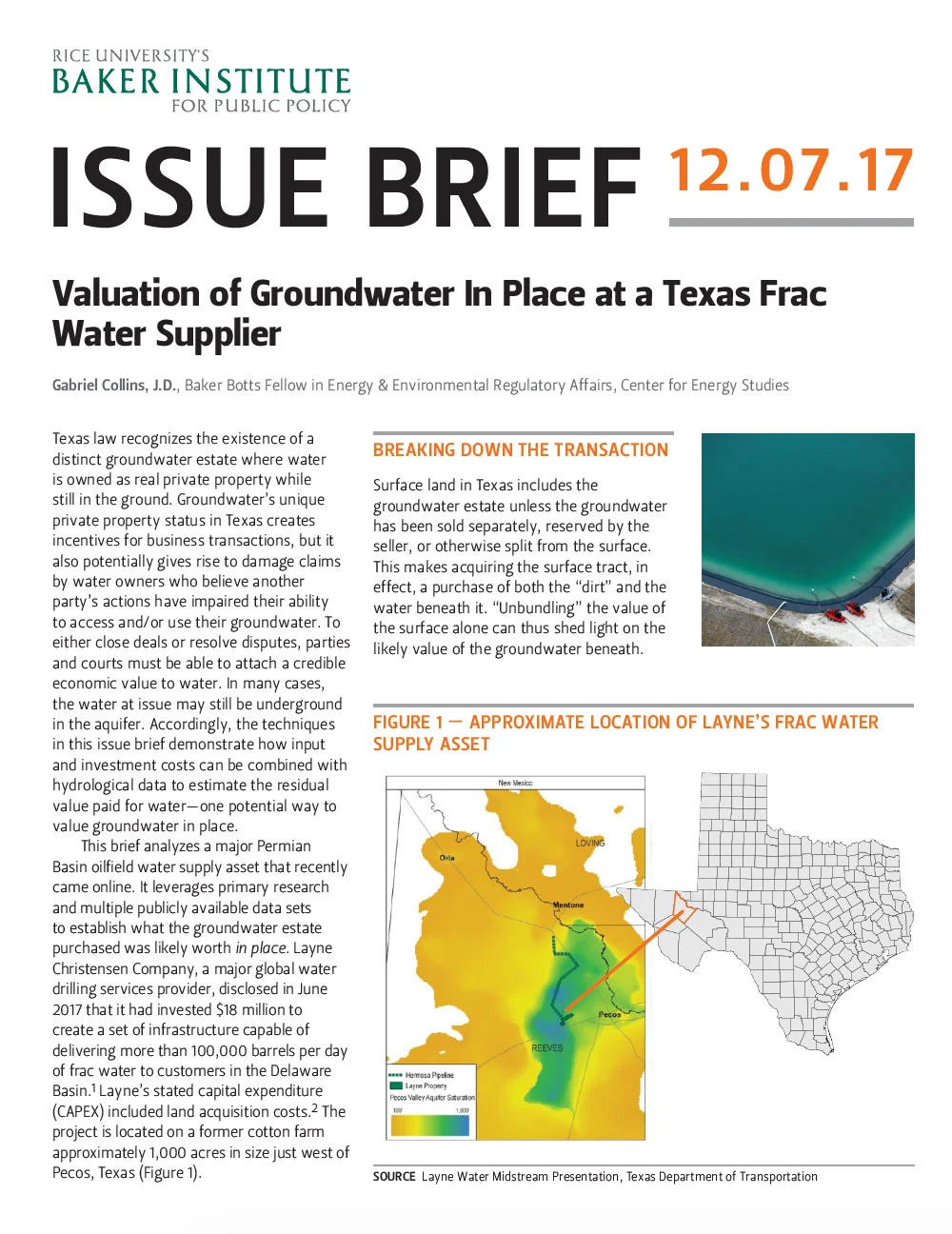The purpose of this analysis is to examine trends in water use and water use intensity for the manufacturing and electric power industry in Texas.
Read MoreIncreasing interest and attention are being directed at the relationship between water and energy resources in the United States. To better weigh the trade-off s and take actions to optimize these resources in concert, the Alliance for Water Effi ciency (AWE) and the American Council for an Energy-Effi cient Economy (ACEEE) teamed up to investigate what relevant research and studies exist that can inform these actions. Even a modest inventory can inform choices about eff ective and relevant research investments as a fundamental method for addressing issues and challenges inherent to this relationship.This paper, prepared by GEI Consultants, Inc. on behalf of and in collaboration with AWE and ACEEE, provides the results of an assessment into the status of research on the relationship or “nexus” between the water and energy sectors. Publicly available research papers and studies that met certain criteria were collected and catalogued into a database. These included investigations that addressed the water sector’s impacts on energy resources and the energy sector’s impact on water resources, including development, operations, and end-uses. The compiled research was then assessed to determine the scope of topics investigated, the key results, and possible gaps. Finally, gaps in the research were identifi ed and inventoried. From this information, a roadmap for future research investments is recommended to enhance multi-sector resource management and overall resource effi ciencies. A summary of the major fi ndings from the collected research is provided and is compared to the major policy objectives and issues as identifi ed in the AWE-ACEEE publication, Addressing the Water-Energy Nexus: A Blueprint for Action and Policy Agenda (Blueprint). From this comparison, final recommendations were developed that address additional research needs.
Read MoreThermal electricity generation is a major consumer of freshwater for cooling, fuel extraction and air emissions controls, but the life cycle water impacts of different fossil fuel cycles are not well understood. Much of the existing literature relies on decades-old estimates for water intensity, particularly regarding water consumed for fuel extraction. This work uses contemporary data from specific resource basins and power plants in Texas to evaluate water intensity at three major stages of coal and natural gas fuel cycles: fuel extraction, power plant cooling and power plant emissions controls. In particular, the water intensity of fuel extraction is quantified for Texas lignite, conventional natural gas and 11 unconventional natural gas basins in Texas, including major second-order impacts associated with multi-stage hydraulic fracturing. Despite the rise of this water-intensive natural gas extraction method, natural gas extraction appears to consume less freshwater than coal per unit of energy extracted in Texas because of the high water intensity of Texas lignite extraction. This work uses new resource basin and power plant level water intensity data to estimate the potential effects of coal to natural gas fuel switching in Texas’ power sector, a shift under consideration due to potential environmental benefits and very low natural gas prices. Replacing Texas’ coal-fired power plants with natural gas combined cycle plants (NGCCs) would reduce annual freshwater consumption in the state by an estimated 53 billion gallons per year, or 60% of Texas coal power’s water footprint, largely due to the higher efficiency of NGCCs.
Read MoreShale-gas production using hydraulic fracturing of mostly horizontal wells has led to considerable controversy over water-resource and environmental impacts. The study objective was to quantify net water use for shale-gas production using data from Texas, which is the dominant producer of shale gas in the U.S. with a focus on three major plays: the Barnett Shale (∼15 000 wells, mid-2011), Texas-Haynesville Shale (390 wells), and Eagle Ford Shale (1040 wells). Past water use was estimated from well-completion data, and future water use was extrapolated from past water use constrained by shale-gas resources. Cumulative water use in the Barnett totaled 145 Mm3 (2000−mid-2011). Annual water use represents ∼9% of water use in Dallas (population 1.3 million). Water use in younger (2008−mid-2011) plays, although less (6.5 Mm3 Texas-Haynesville, 18 Mm3 Eagle Ford), is increasing rapidly. Water use for shale gas is <1% of statewide water withdrawals; however, local impacts vary with water availability and competing demands. Projections of cumulative net water use during the next 50 years in all shale plays total ∼4350 Mm3, peaking at 145 Mm3 in the mid-2020s and decreasing to 23 Mm3 in 2060. Current freshwater use may shift to brackish water to reduce competition with other users.
Read More












